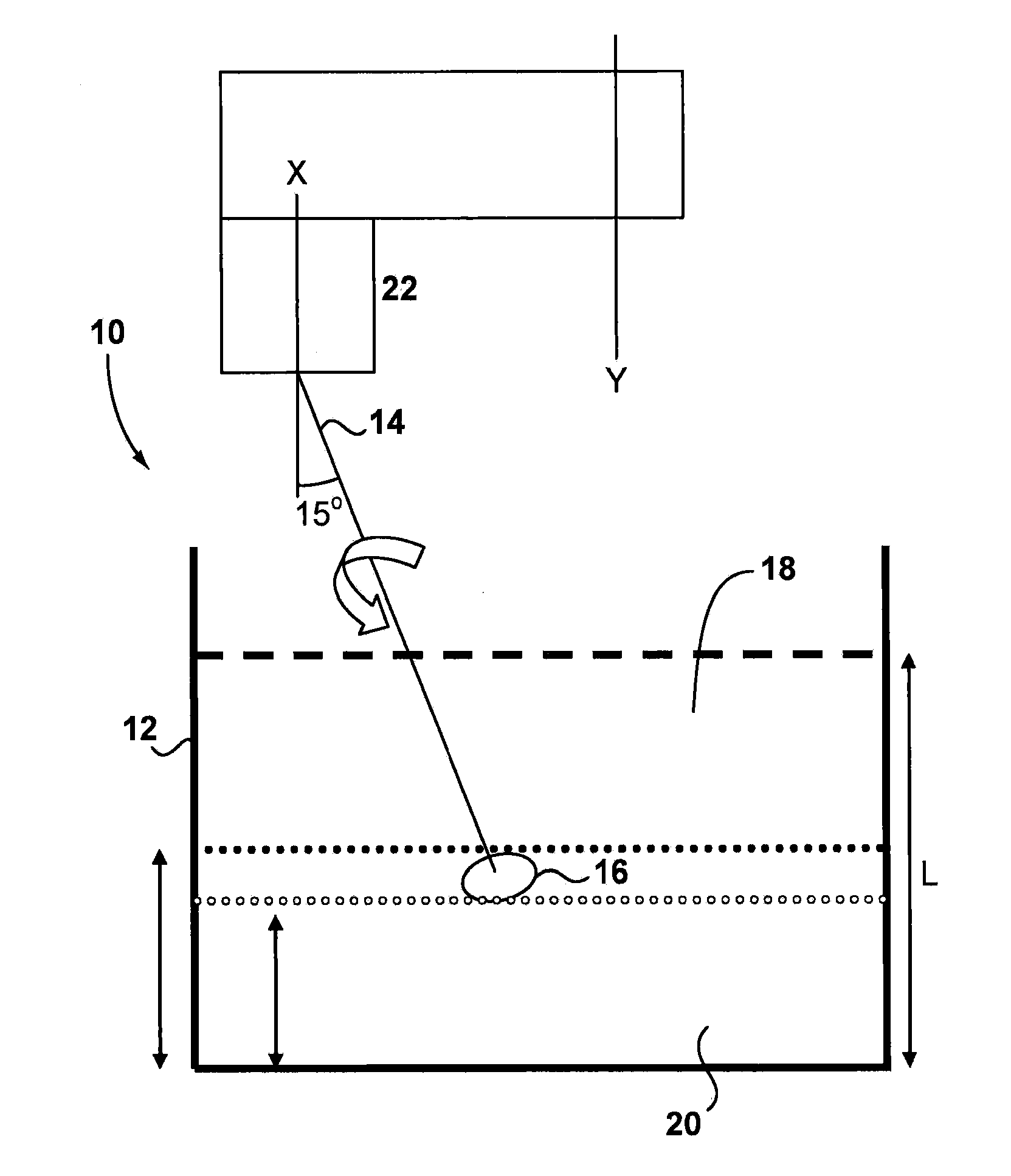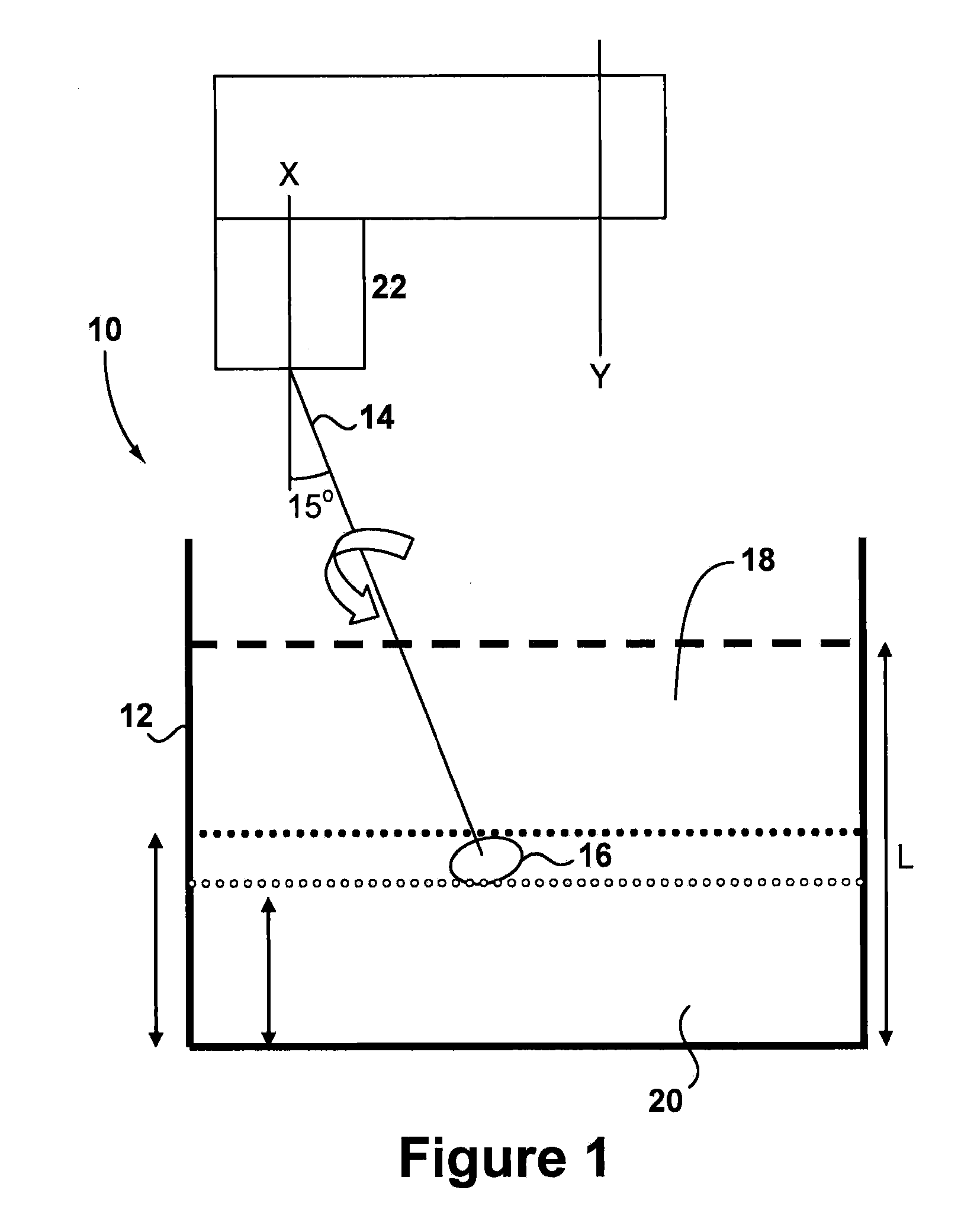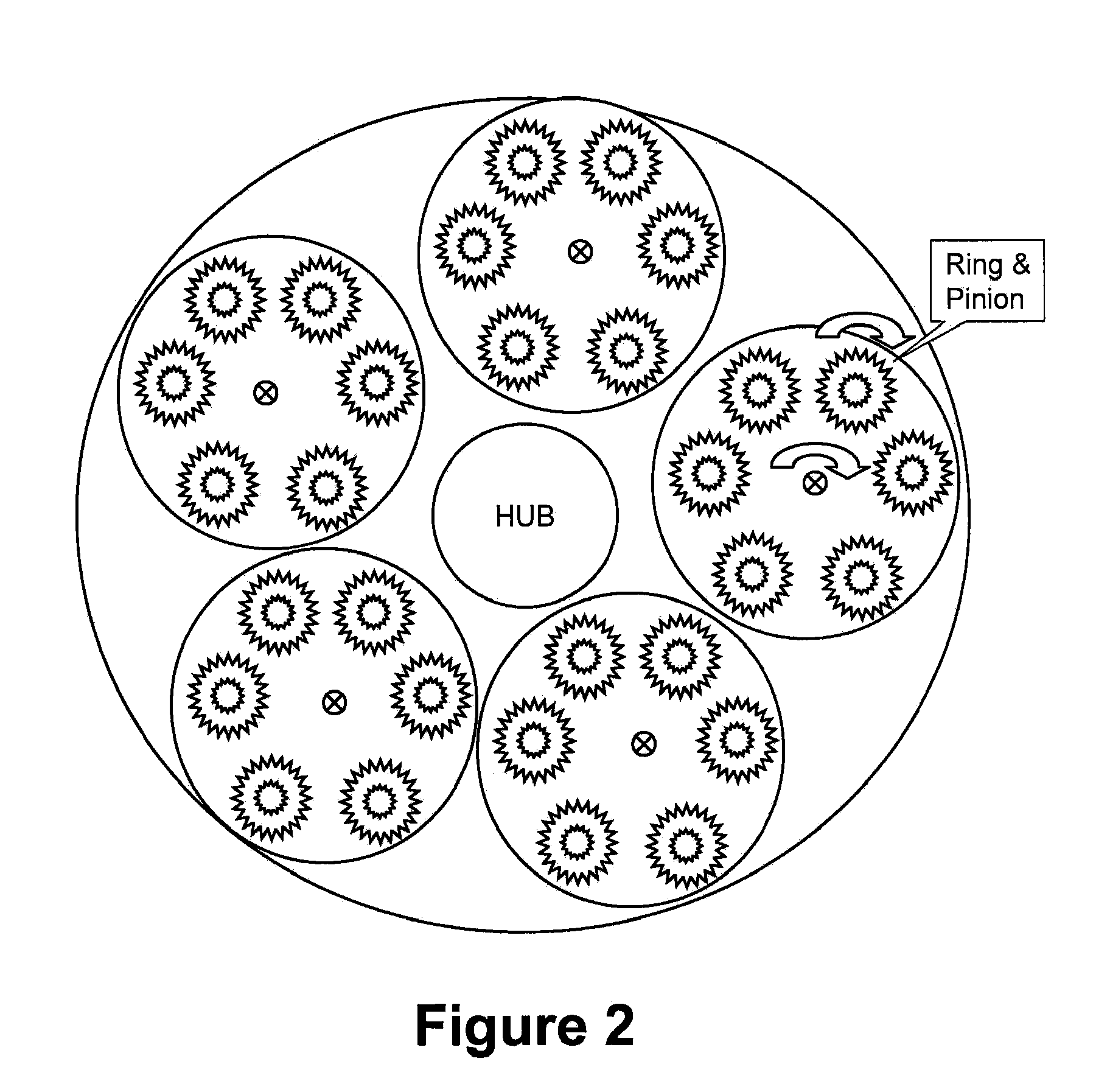High throughput finishing of metal components
- Summary
- Abstract
- Description
- Claims
- Application Information
AI Technical Summary
Benefits of technology
Problems solved by technology
Method used
Image
Examples
example 1
[0052]In a first example, the bowl 12 was filled with media 18 to a level of approximately 406 mm depth. The media comprised non-abrasive 3×5 SCT (straight cut triangles). A quantity of 76 litres of chemistry of type FERROMIL® FML-7800 diluted at 35 vol % and pre-heated, was added to the bowl. The media was stirred and then the chemistry was drained, leaving the media wet and at a temperature of around 43° C. (all temperature was measured using an infra-red heat sensor gun reading off the top of the media). A rear axle hypoid ring gear of 23 cm diameter was attached to the spindle 14 and lowered into the bowl to a depth at which the bottom of the ring gear was around 160 mm from the bottom of the bowl. The gear had an initial surface finish of 1.2-1.7 microns. The turret 22 was driven for 10 minutes at about 31 rpm and the spindle rotated at about 40 rpm. After 10 minutes the ring gear was removed and inspected. The surface roughness after processing for 10 minutes was determined to...
example 2
[0053]As a control, a ring gear of similar type to Example 1 was finished using conventional vibratory finishing in a Sweco approximate 300-liter bowl. The bowl was operated at an amplitude of 4.5 mm and a lead angle of 65°. The media comprised 3×5 SCT as in Example 1. The chemistry used was FERROMIL® FML-7800 at a 20 volume % concentration (the chemistry of Example 1 would have been unusable in this example as it would have caused etching), delivered on a flow through based at a rate of 11 litres per hour at ambient temperature. The ring gear had an initial surface roughness of 1.25-1.75 microns. It required 60 minutes of processing time to achieve a surface roughness of 0.15-0.2 microns.
example 3
[0054]The procedure of Example 1 was repeated except that instead of draining the bowl it was instead filled with 76 litres of chemistry to a level of around 200 mm. On lowering the ring gear into the bowl, the ring gear was substantially immersed in the chemistry. After 10 minutes of processing, the part has a surface roughness of 0.12-0.2 microns. An example trace taken before and after processing is shown as FIG. 3.
PUM
| Property | Measurement | Unit |
|---|---|---|
| Temperature | aaaaa | aaaaa |
| Temperature | aaaaa | aaaaa |
| Temperature | aaaaa | aaaaa |
Abstract
Description
Claims
Application Information
 Login to View More
Login to View More - R&D
- Intellectual Property
- Life Sciences
- Materials
- Tech Scout
- Unparalleled Data Quality
- Higher Quality Content
- 60% Fewer Hallucinations
Browse by: Latest US Patents, China's latest patents, Technical Efficacy Thesaurus, Application Domain, Technology Topic, Popular Technical Reports.
© 2025 PatSnap. All rights reserved.Legal|Privacy policy|Modern Slavery Act Transparency Statement|Sitemap|About US| Contact US: help@patsnap.com



